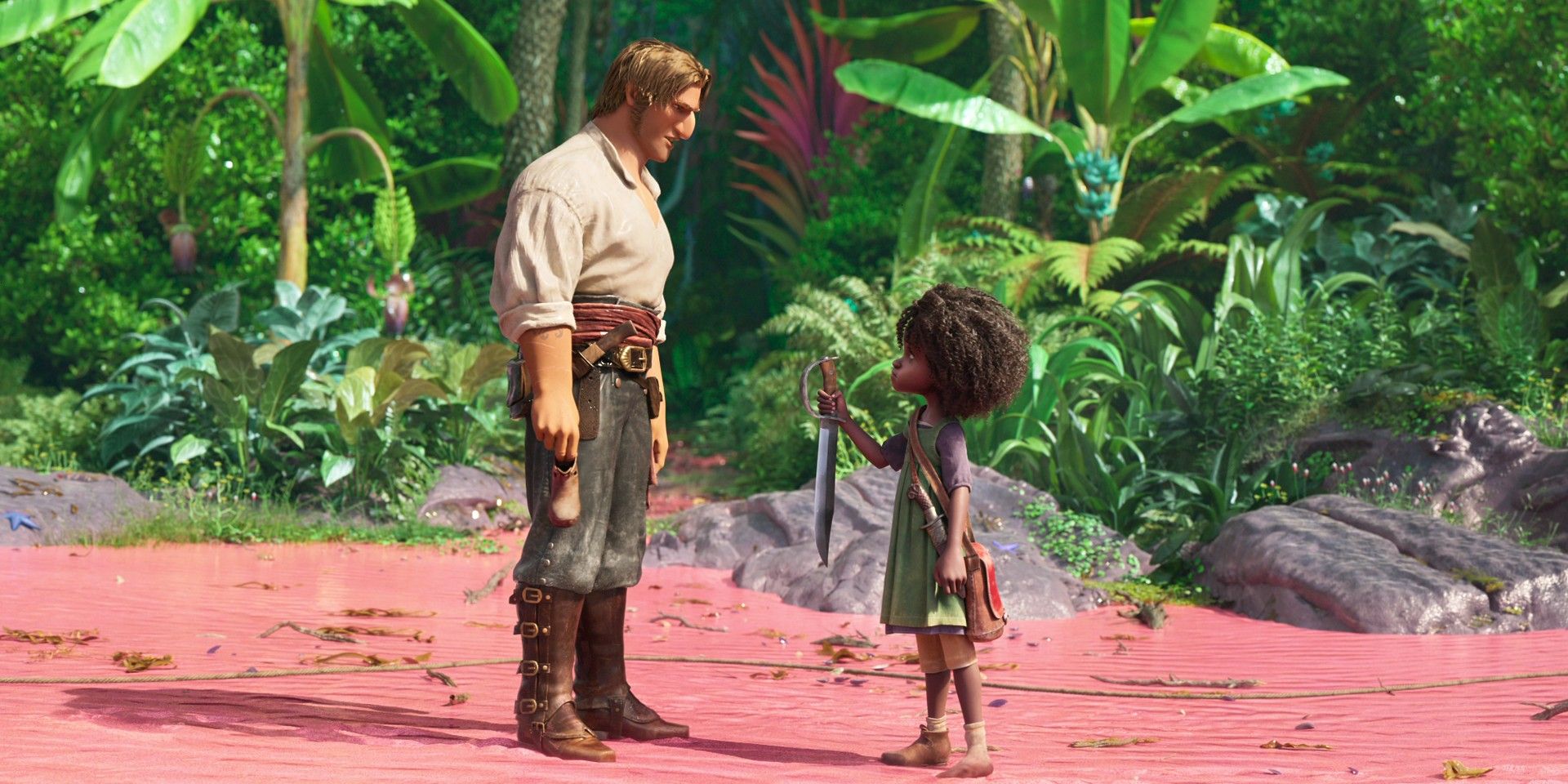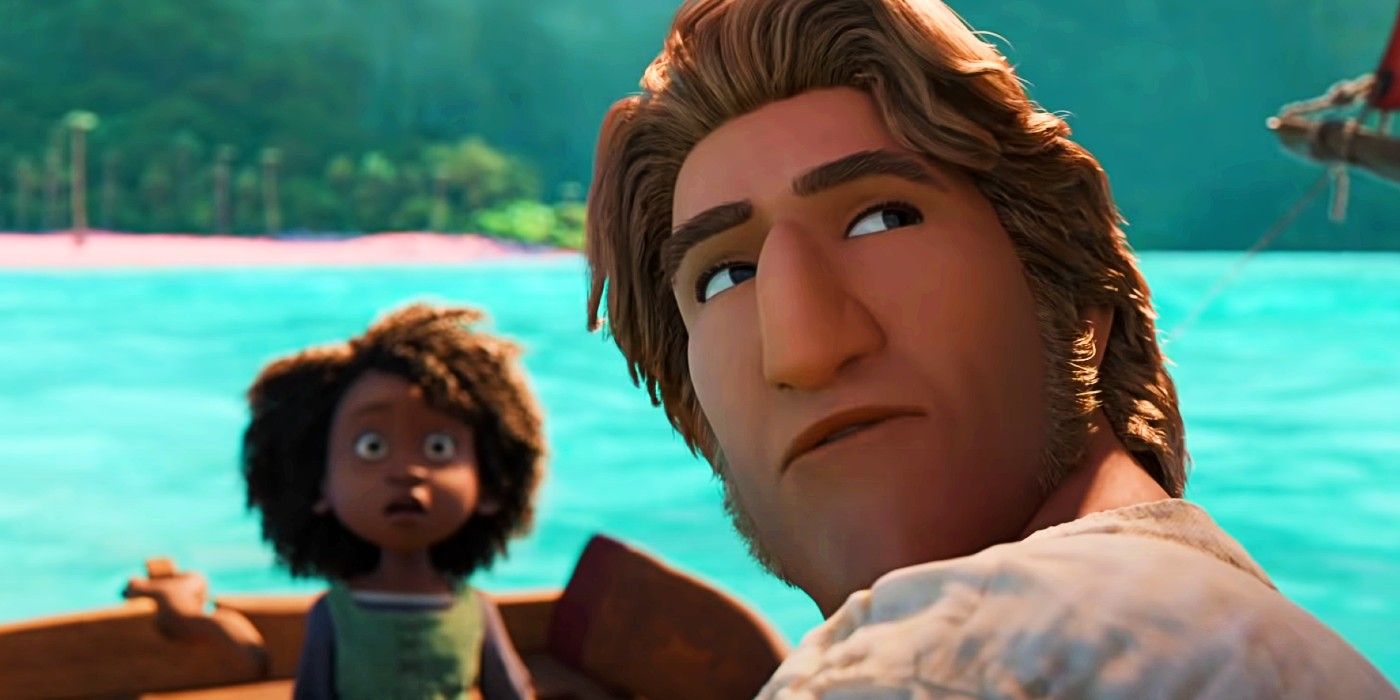Joshua Beveridge is the Head of Character Animation for Netflix’s upcoming animated adventure The Sea Beast. Karl Urban lends his voice as Jacob Holland, a famous monster hunter and a member of the crew of a notorious ship captained by Jared Harris’ character. When a young girl named Maisie Brumble (Zaris-Angel Hator) joins the crew inadvertently, Jacob is put in charge of the young ward and the pair end up lost at sea on their own and surrounded by the mysterious creatures that reside in the ocean.
Beveridge has worked in the animation departments of hit films like Storks, Hotel Transylvania 2, Cloudy with a Chance of Meatballs, and many more. The Sea Beast is directed by Chris Williams and is set to hit Netflix on July 8.
Screen Rant sat down with Beveridge to discuss the making of The Sea Beast, including how they came up with the look for the titular sea creatures, building a new world from scratch, and much more.

Screen Rant: What was it like coming up with the creatures for The Sea Beast and where did you draw inspiration from?
Joshua Beveridge: Yeah, the creatures were a combination of a lot of different animals. From real-life is mostly what we draw from at all times. We wanted to make sure they stayed creatures, stayed beasts. We specifically didn’t want to anthropomorphize or put a human brain in their bodies. We looked at whales and sharks and orcas, as well as crocodiles. Any unique combination. No one creature drew from one animal, we always made a cocktail for them.
What is it like coming on to a new project, especially one like The Sea Beast where it’s a new world that you’re building from the ground up?
Joshua Beveridge: That’s one of the favorite things about animation. It can be so many art forms. I still think we’re in the infancy of animation – we’re a pretty young medium still if you compare it to other art forms. There’s only had a handful of decades this has been going on. Especially computer animation. One of the things that drew me to this was just how much it’s a film and how much it’s drawing from a slightly more mature tone. It’s still all audiences but just a little bit more sophisticated than we often are.
Speaking of the mature tone, was that something you wanted to lean into? Did you kind of want to make it a little bit frightening?
Joshua Beveridge: Absolutely. The whole roller coaster is fun, not just the top of it. Like, we thought about Indiana Jones, where everyone wants to see that kind of adventure. And it’s not really adventure unless there’s risk, there’s peril, there’s a little bit of this [that] could go wrong.
Did making The Sea Beast during the pandemic shift or change your perspective on how you work on these projects? And do you think you’ll take anything from this experience forward as you continue doing more movies?
Joshua Beveridge: Probably yes to both. So the production shifted. It timed out pretty cleanly with most of the pre-production work we were doing. Like starting to just build and rig the characters and getting some assets built. We did that as a group together, it was a really small team. And then almost as soon as we started actually making the shots that will go in the movie – all of that was was from each other’s homes. So there was a shift where a lot of the team only worked from their home.
But at Sony Image Works, I’ve kind of been doing that part for a while that way. Not from home specifically, but we have a sister branch that’s in Vancouver as well. And also Montreal, and it’s spread around. So I’m used to working this way to begin with, so we didn’t miss a beat when it was time to transition that way. The company impressively solved the security challenges and got everyone working that way. But for me personally, I’ve been working that way for years.

The video you showed during the presentation of everyone sharing their work over Zoom looked almost fun in a way.
Beveridge: Like it’s funny – you’ve worked with these some of these folks for years, but it wasn’t till the pandemic that we’re seeing each other’s living rooms and seeing their kids coming in there. I loved that part of it. I thought that was great. And there is another benefit. This is the same for a while, again, because I’ve been talking to the team in Vancouver through screens for a long time like this.
There is this part of it that is a little bit more human – you’re connecting face to face with the person instead of like when we’re all in the same building [and] you go around to people’s desks. You go behind their shoulder and like over the shoulder and talk about the work in front of them. And sometimes that can be awkward. In this way of working, you’re talking about the work in the abstract and you’re looking at each other face to face. And I liked that part.
Were there any other challenges in bringing this world to life besides the sea and the ropes and all of that? Like the monsters or the characters themselves?
Beveridge: Well, I think both are very different challenges. There’s some of the team [that] excels at very different things. So when it comes to creatures, like who’s got the best physics,. They’re so heavy, that can be really challenging for people who’ve never animated something that heavy. That’s a big gearshift. But we have folks at Image Works – they’re experts at specifically heavy, big, big beasts. But whenever you have human characters, and especially when they start tilting, they have a few more anatomical details, like where you can tell where there are bony landmarks, and they’re not going to be able to be water balloon heads or squashy, like really abstract.
You have to really be more careful with the boundaries of reality. I try and caution to not let reality ever be the goal because this is still a fantasy. This is not only an exercise in recreating reality. We are making a performance and it’s all choices. But those choices in this town in this world just have to be a little bit more delicate.
Check out our interview with The Sea Beast‘s director, writer, and producer Chris Williams as well.
The Sea Beast arrives July 8 on Netflix.




